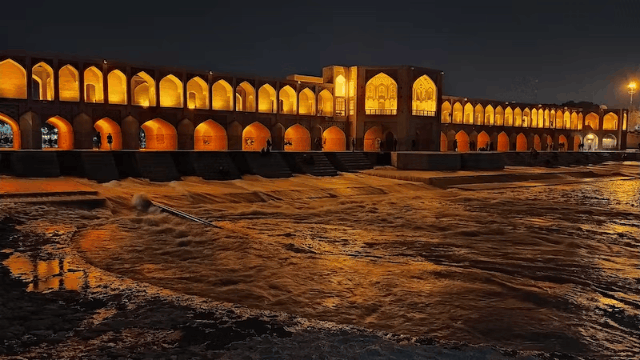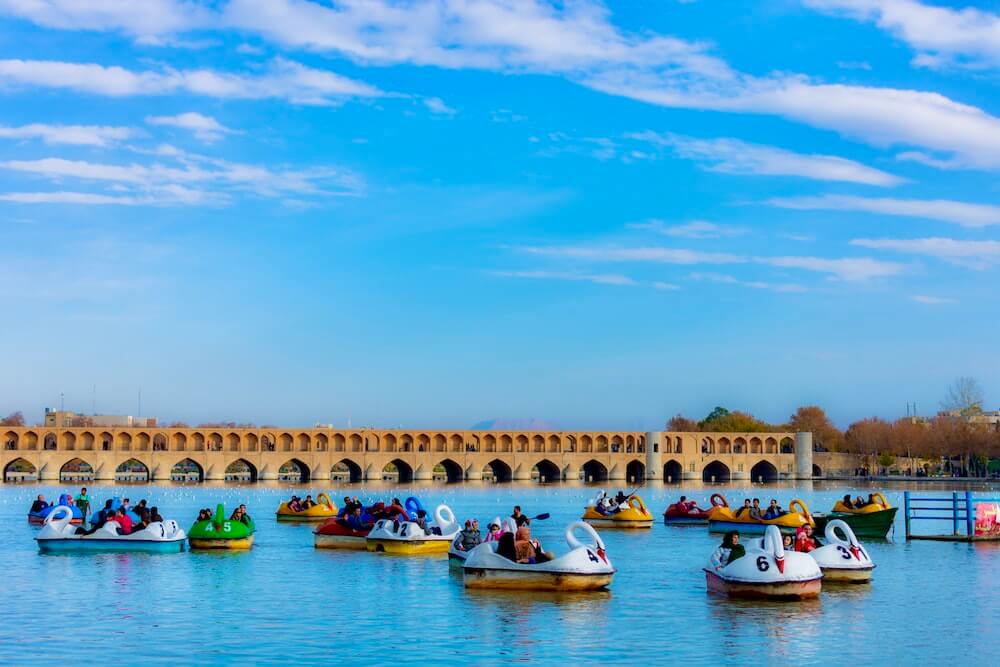Half the world in Isfahan - the most dazzling city in the Muslim world

Isfahan, the capital of Isfahan Province in Iran, is the third largest city in Iran. It is located in the valley of Zagros and Kuhru mountains in central Iran, on the bank of the Zaindai River, with an altitude of 1590 meters. It was first built in the period of the Ahmadinejad dynasty and has become the capital of the dynasty for many times.
Isfahan is not only famous for its beautiful scenery, but also for its magnificent buildings such as gardens and mosques. It has various Islamic style buildings from the 11th century to the 19th century. It is also the main station of the South Road of the "Silk Road", and it is also the center of trade between the East and the West. Businessmen from all over the world are gathered here, and various commodities are also dazzling. Isfahan was once the richest in the world, so it has the reputation of "half the world in Isfahan" among the people.

Isfahan is a famous handicraft and trade center. The existing railway connects Gum and Tehran, and is also a highway transportation center. The main market of agricultural and livestock products nearby. It has long been the center of light industry, and the textile industry ranks the first in the country, including cotton and wool textile and silk weaving, as well as dried fruit, paper, oil, matches and other factories. Handicrafts are famous, including silver, bronze, pottery, carpet, etc. It has also developed heavy industry, and Iran's main nuclear facilities are also built here.
Isfahan is the most dazzling city in Iran and even in the whole Muslim world, which can satisfy any illusion of Islamic style.
There are too many places to visit in Isfahan: the dreamlike 40-pillar palace of the Safavid dynasty, the Western Osai Bridge with 33 arches, the majestic Main Ma Mosque, the maze of the Great Bazaar, the wind tower that swings with one hand but never falls, the huge pigeon tower built to take dung and plant muskmelon, let alone the Zoroastrian fire worship altar and the exquisite Armenian church.

Isfahan is a tourist attraction with a mild and pleasant climate.
The main places of interest are:
- Imam Square: Located in the center of the city, it was called the King's Square before the revolution. It is 510 meters long, 165 meters wide and covers an area of more than 80000 square meters. It was built in 1612 under the Abbasid emperor of the Safavid dynasty. It was a polo field at that time.
- Imam Mosque:Located at the south end of the square. It was built in 1612 under Abbas I and completed in 1630. It covers an area of 17000 square meters. It is the largest double-layer (15-meter interval) vaulted mosque in Isfahan. The inside and outside of the mosque are inlaid with exquisite ceramic tiles. The gate of the mosque is silver-plated, and there are many poems written on the door, which is written by the famous calligrapher at that time in beautiful Persian Nastalic style. There are murals and decorations reflecting the highest level of culture and art at that time on the wall. The building is magnificent and the design is exquisite. The minarets on the vault of the mosque face the Mecca shrine. The large arch on the south side of the temple is 54 meters high, and the main part is gilded or silvered, which is brilliant and shining. If you stand on the echo stone facing the vault and clap your hands, you can hear many loud echoes. The farther away from the center of the vault, the weaker the echo. On both sides of the large arch, there are two minarets, 43 meters high. There is also a triangular sundial in the temple, which was used to measure time at that time. When the temple was built in the 17th century, there were theological classrooms and lecture halls on the west side of the temple. There are still many places for worship and prayer.
- Forty-pillar Palace: the total area is about 67000 square meters, and the main building area is 1113 square meters. The palace was built at the time of Abbas I and Abbas II. It was the place to receive distinguished guests and foreign envoys at that time. The cornerstone of the palace is about 1 meter above the ground. The first half of the palace is a spacious platform with three open sides, on which there are twenty tall pine columns. There is a marble pool in the middle of the four big columns in the center. Water spouted from the mouth of the stone lion under the four pillars. In front of the palace is a large rectangular pool, 110 meters long and 16 meters wide, surrounded by fountains and stone sculptures. Standing at the edge of the pool and looking at the palace, the twenty pillars and the clear reflection reflected in the water are integrated, hence the name of "Forty Pillar Palace". The main hall connected with the platform has three vaults. There is a glass inlaid mirror hall at the entrance, which was built in 1657 during the reign of Emperor Abbas and renovated during the reign of Safavid II.
- Arigapu Palace: a six-storey building on the west side of Imam Square, built at the beginning of the 17th century, is the palace used by the Safavid emperors to entertain foreign envoys. The grandstand is the place where the emperor and royal guests watch polo and fireworks and review the army. The hall has three vaults. There is a glass inlaid mirror hall at the entrance, which was built during the reign of Abbas in 1657, and was renovated during the reign of Safavid II. There are several magnificent murals and exquisite carving art on the wall of the hall, reflecting people's life, labor and war scenes at that time. The main hall is divided into an exhibition hall, displaying the cultural relics and treasures of that time, such as utensils, ancient coins and calligraphy.
- Hazhu Bridge: It was built in the period of Safavid II and was a place for people to play and enjoy the cool.
- Thirty-three hole bridge: built during the Abbasid Emperor, it is named for its thirty-three bridge holes. It is a distinctive building on the Zayandeh River.
- Wanke Church: the Armenian church. In the early days of the reign of the Safavid Emperor, Armenians moved to this place from Zhuolefa according to the order of the emperor, and then built this church with the encouragement of the emperor.
- Shaking tower: a unique historic site in Isfahan is a mausoleum building. When you climb to the top of the tower and shake a wooden column, the whole tower will shake. It has been damaged for a long time, so it is often repaired and reinforced, and not often opened.

Isfahan has many hotels and hotels for tourists. The "Shah Abbas Hotel" is the most luxurious one, maintaining the architectural characteristics of ancient Iran.
"Garz Sugar" is a famous specialty of Isfahan, similar to Chinese maltose and happy nuts.
Handmade hammer plates are also famous handicrafts in Isfahan.


